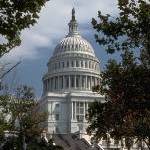 Free markets these days are always and everywhere under assault. Europe, China, Japan, and the United States, among others, are delving into extreme economic intervention. For whatever reason, uplifters around the globe have taken it upon themselves to meddle in people’s lives on a grand scale.
Free markets these days are always and everywhere under assault. Europe, China, Japan, and the United States, among others, are delving into extreme economic intervention. For whatever reason, uplifters around the globe have taken it upon themselves to meddle in people’s lives on a grand scale.
Last week, for instance, it was revealed that greater price-fixing operations are being considered. Regrettably, these plans would be more intrusive than commanding the price of Peruvian bananas or rents on New York City apartments.
Unfortunately, the latest scheme being considered would do much, much more. In a roundabout way it would affect the price of all goods and services. For it would fix the price of the economies most important commodity…its money. Here are the particulars…
According to the Wall Street Journal, the Federal Reserve is mulling over a new bond buying program. Like past quantitative easing operations, the Fed would print money to buy long-term mortgage bonds and Treasuries. However, this next experiment would be a bit different…
Under the Fed’s new brainchild, they would print money to buy long-term bonds and then borrow the money back from investors for short, approximately 1-month periods. By doing so the freshly printed money would be pulled back out of the financial system, which would restrain inflation expectations. The Wall Street Journal referred to these money games as “sterilized” QE. We call it “writing checks to each other.”
Government Price-Fixing
In theory, sterilized QE would allow the Fed to lower long-term interest rates and encourage more credit based spending by households and businesses. By artificially lowering the price of money the Fed believes they will stimulate demand, and boost economic growth from its dreary doldrums.
Here at the Economic Prism, while we don’t question the Fed’s good intentions, we are suspicious of the outcome. Common observation and reflection has shown us that government price-fixing generally makes a big mess of things.
“Now we cannot hold the price of any commodity below its market level without in time bringing about two consequences,” explained Henry Hazlitt in Chapter XVII, Government Price-Fixing, of his classic work, Economics In One Lesson.
“The first is to increase the demand for that commodity. Because the commodity is cheaper, people are both tempted to buy, and can afford to buy, more of it.
“The second consequence is to reduce the supply of that commodity. Because people buy more, the accumulated supply is more quickly taken from the shelves of merchants. But in addition to this, production of that commodity is discouraged. Profit margins are reduced or wiped out. The marginal producers are driven out of business. Even the most efficient producers may be called upon to turn out their product at a loss.”
The Fed’s Next Price Fixing Scheme and You
Predictably, when governments artificially suppress the price of a commodity the profit incentive for producing it disappears. Before long it too disappears from the market. On the contrary, when governments artificially suppress the price of money the consequences are entirely unpredictable.
Several years ago, for instance, following the dot com blowup Fed Chairman Greenspan pushed the federal funds rate down to the then unheard of rate of 1 percent and left it there for over a year. No doubt, Greenspan was only trying to stimulate the economy. But unfortunately the unexpected happened.
Rather than a booming economy, Greenspan got a booming housing market. At first the boom was mistaken for a real economic boom. Soon enough, however, it was revealed to be a destructive cheap credit induced housing bubble.
At the same time Greenspan’s cheap money was inflating an epic housing bubble, it was stimulating not the U.S. economy; but rather, the Chinese economy. Greenspan’s cheap money had the unpredictable effect of stimulated U.S. consumer demand for cheap Chinese made import products. By 2006 the U.S. trade deficit topped $817 billion. In other words, the U.S., as a whole, spent $2.23 billion more per day than it made for an entire year. The difference, of course, was made up with debt.
Today the Federal Open Market Committee meets to discuss their monetary policy options. But don’t expect them to introduce sterilized QE just yet. First they need the stock market to drop 20 percent. Then, once that happens, they’ll be able to get away with just about anything…and everything.
Make no mistake about it, Greenspan’s policies were mere child’s play to Bernanke’s. As Fed Chairman, Bernanke pushed the federal funds rate to practically zero in December of 2008 and says he’ll leave it there until late 2014. On top of that he’s created over $2 trillion from nothing and loaned it to the government.
The next fix will, unquestionably, further perpetuate the destructive distortions these price-fixing schemes have on every aspect of the economy…and there’s nothing you can do to escape it.
Sincerely,
MN Gordon
for Economic Prism
Return from The Fed’s Next Price Fixing Scheme and You to Economic Prism





Pingback: The Malady of the Federal Reserve